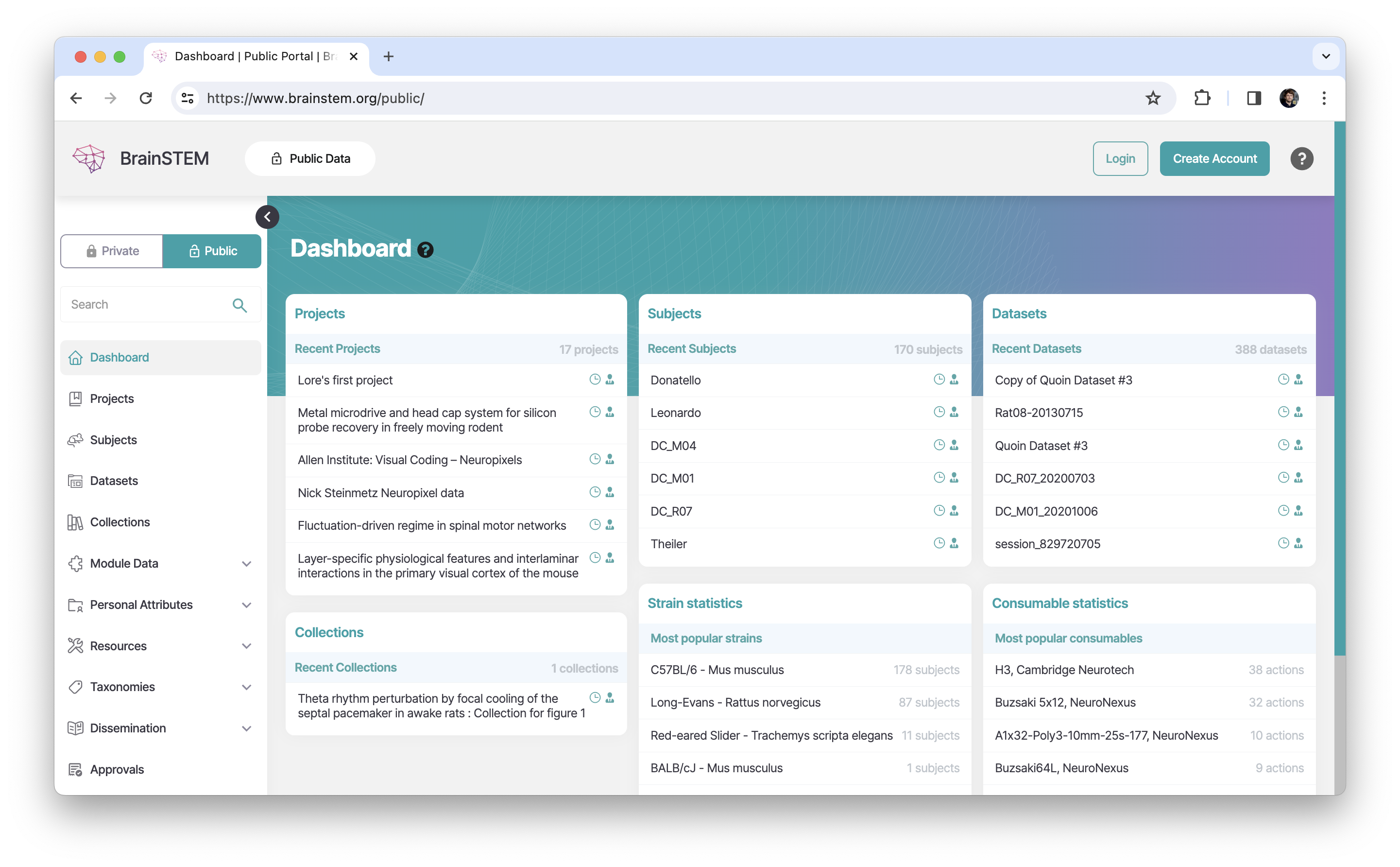Public data
The BrainSTEM public data portal enables open sharing and discovery of neuroscience research data. It allows anyone to explore, reuse, and cite published datasets, while providing researchers with a streamlined way to make their work accessible to the global community.
 Example of the BrainSTEM public data dashboard
Example of the BrainSTEM public data dashboard
BrainSTEM Public Data Portal
BrainSTEM’s public data portal serves two key audiences:
For data sharers:
- Make your research discoverable and reusable by publishing it through BrainSTEM’s public portal.
- Link your entries to external repositories or institutional portals for persistent access to raw data, code, and supplementary materials.
- Ensure your work is citable and credited, with citation and publication links included in every public dataset.
For data reusers:
- Instantly browse, search, and download neuroscience datasets from published projects, subjects, sessions, and collections—no login required.
- Access rich metadata, links to raw data in external repositories (e.g., DANDI, OpenNeuro, Zenodo), and citation details for proper attribution.
- Use the public API to programmatically query and integrate public BrainSTEM data into your own analyses. See the API documentation for details.
Key Features
- Open access: No account needed to explore or reuse public data.
- External repository linking: Direct links to raw data and code in major repositories.
- Public API: Programmatic access for advanced users and integration.
- Attribution and citation: Built-in support for proper credit and reproducibility.
How to Share Your Data Publicly
For a step-by-step guide, see our tutorial: How to share data publicly
- Mark your project as public in BrainSTEM (requires an account and the right permissions).
- All related subjects, procedures, sessions, collections, and cohorts linked to that project will automatically become public. See the public sharing inheritance model for details.
- Optionally, add links to external repositories or resources in your data entries to increase visibility and access.
- Once public, your data will appear in the public portal and be accessible to all users and via the public API.